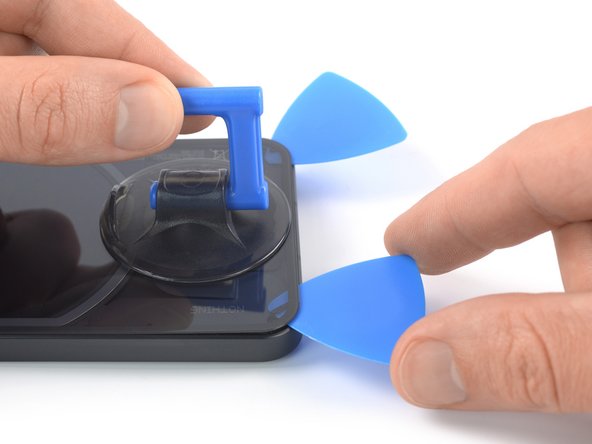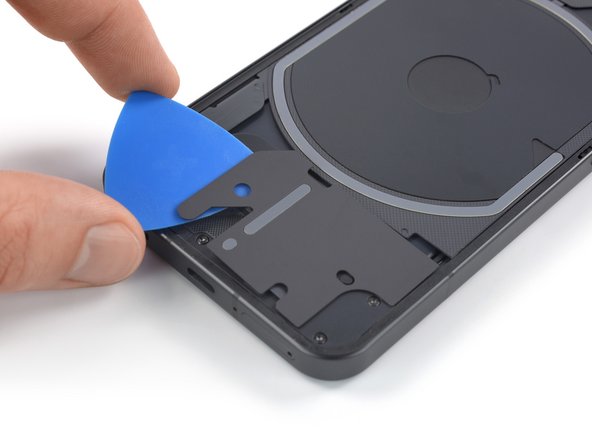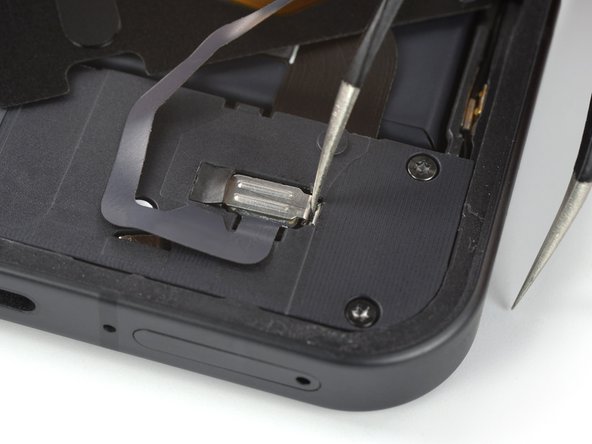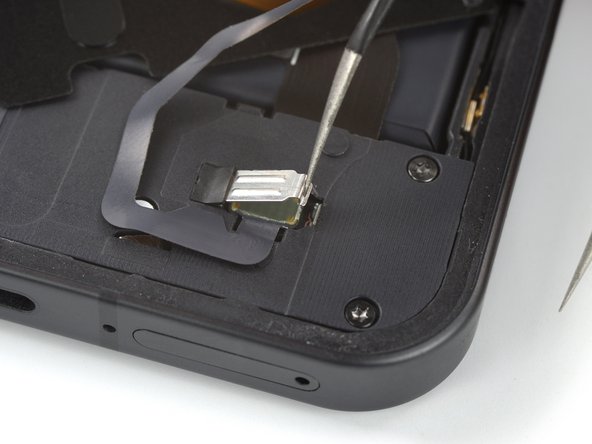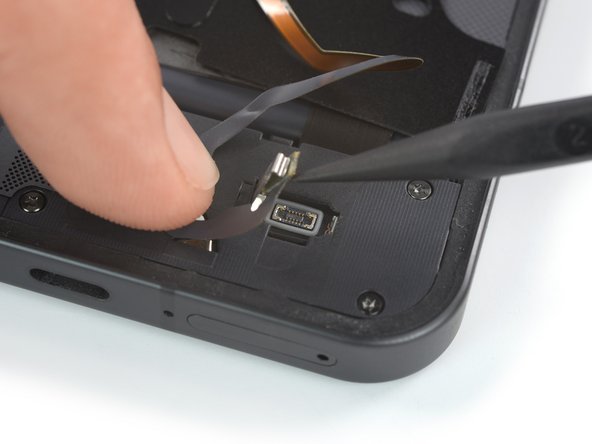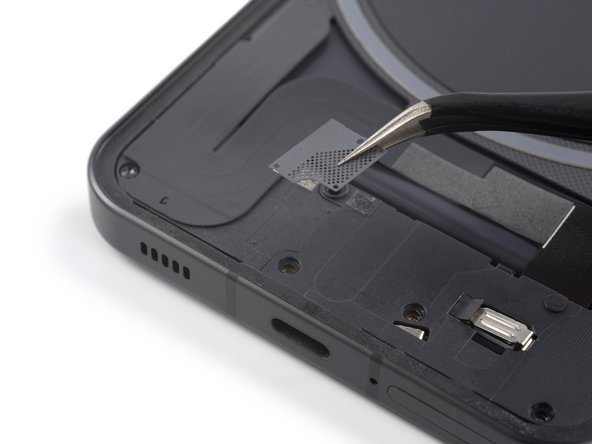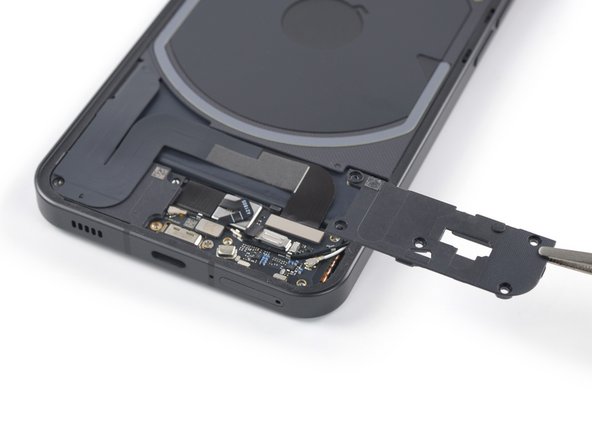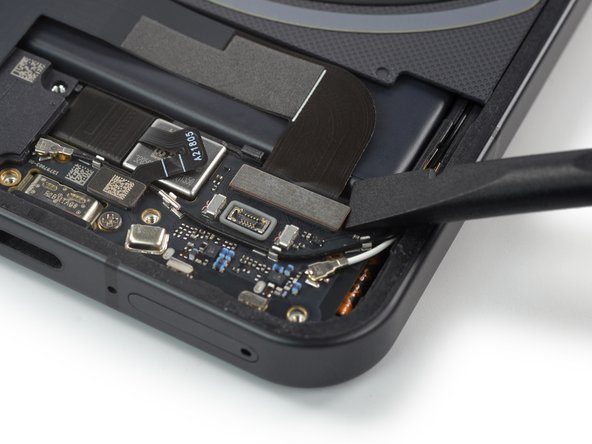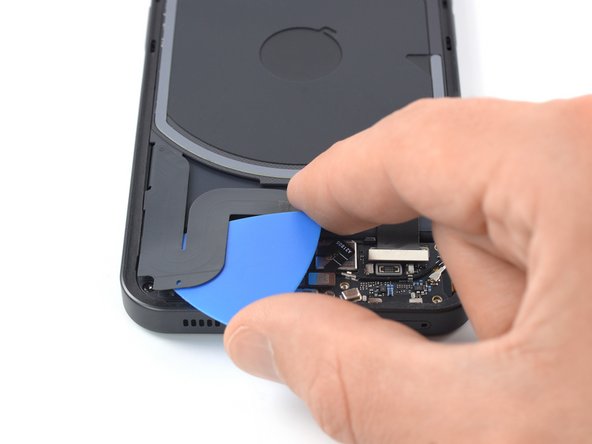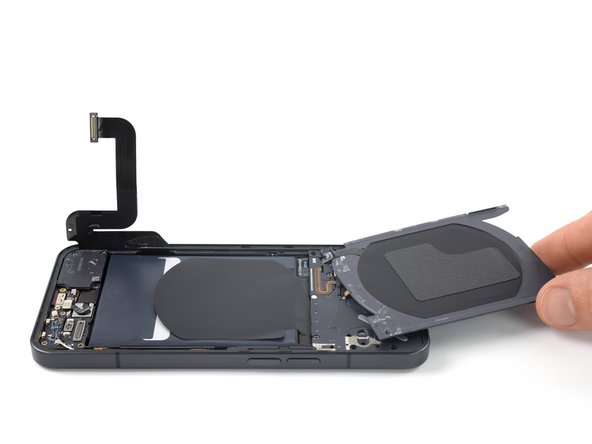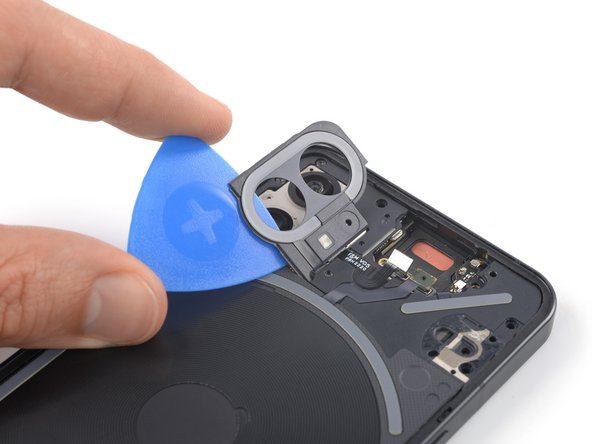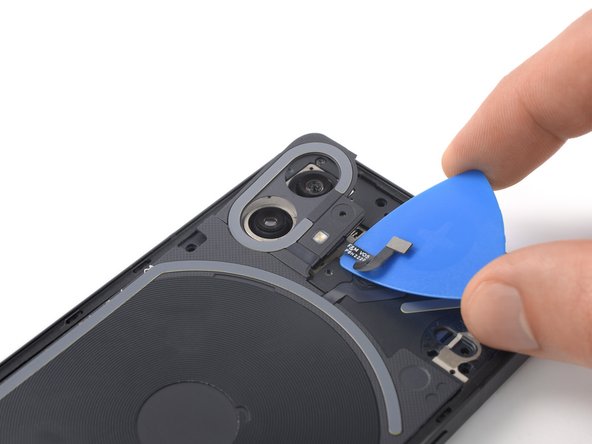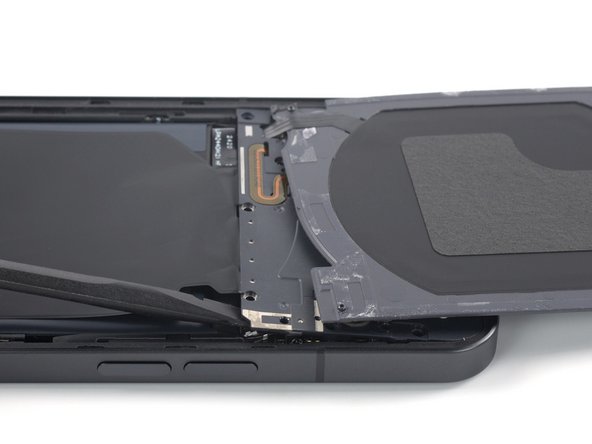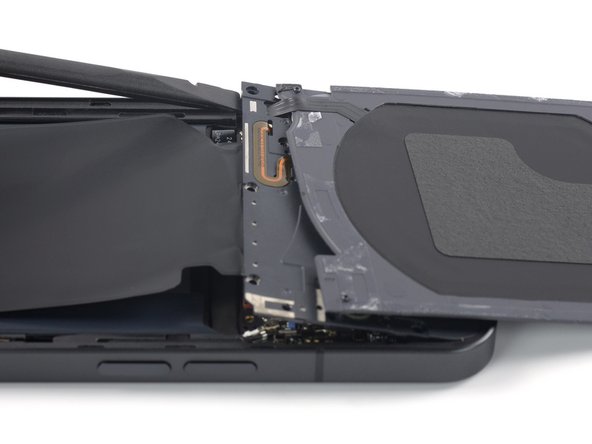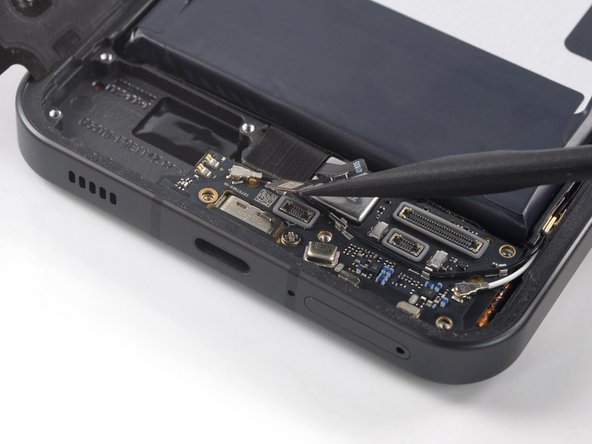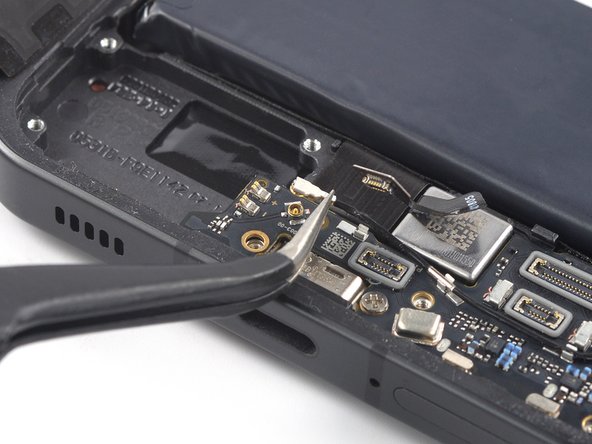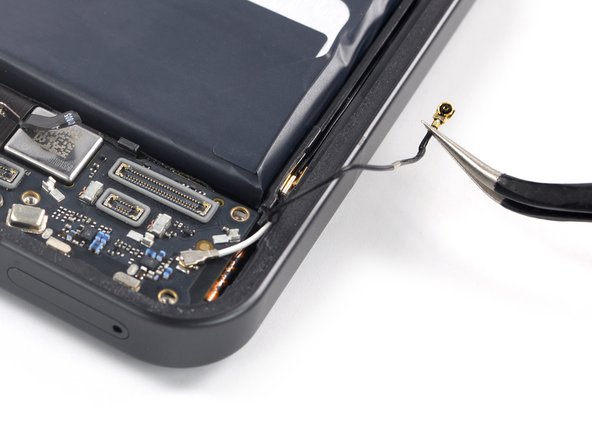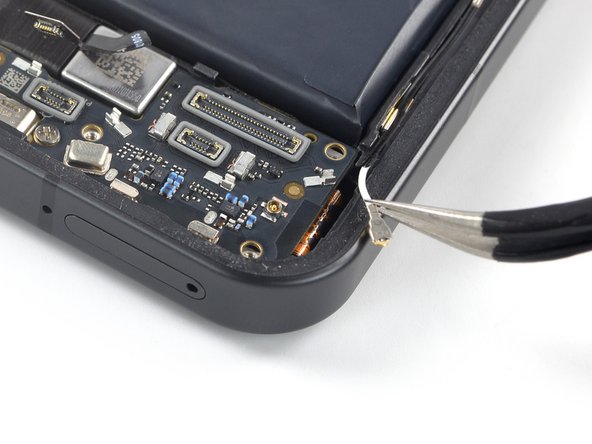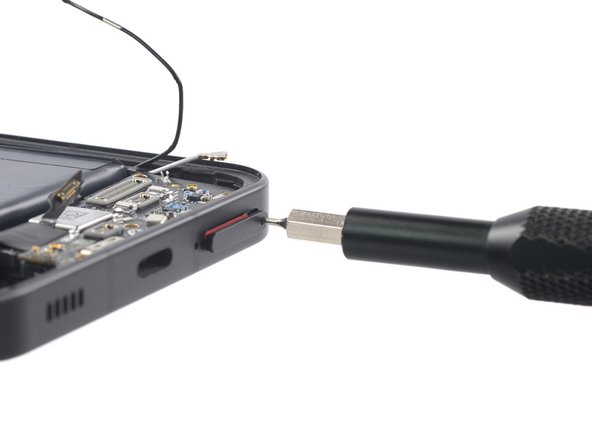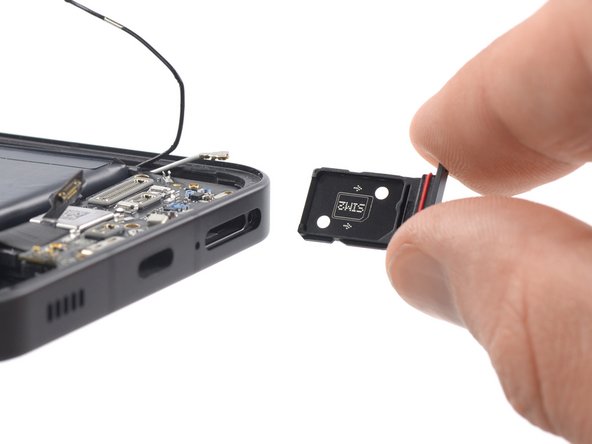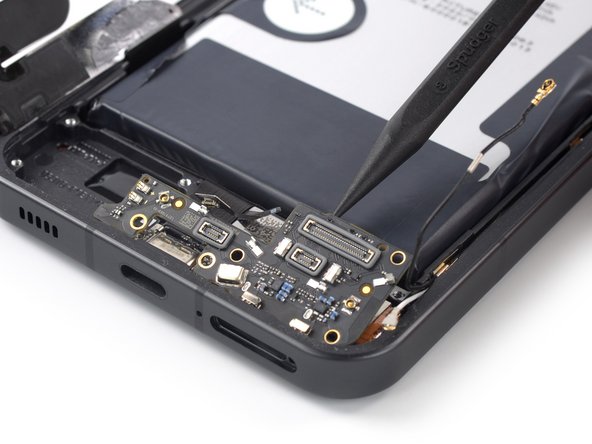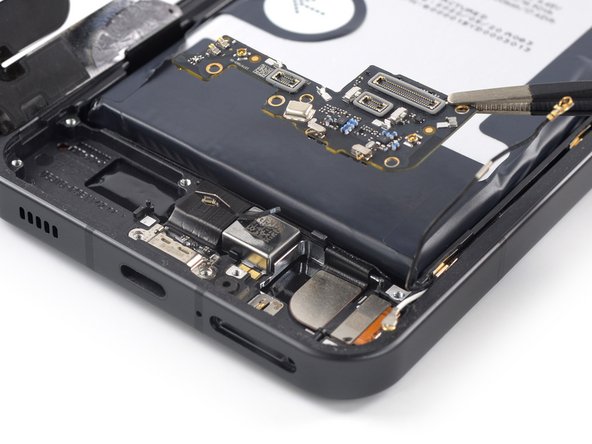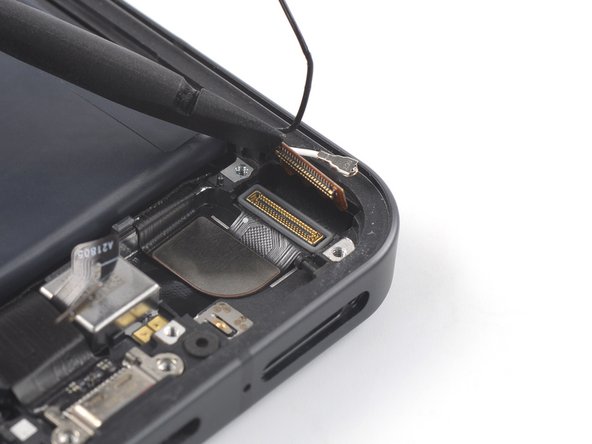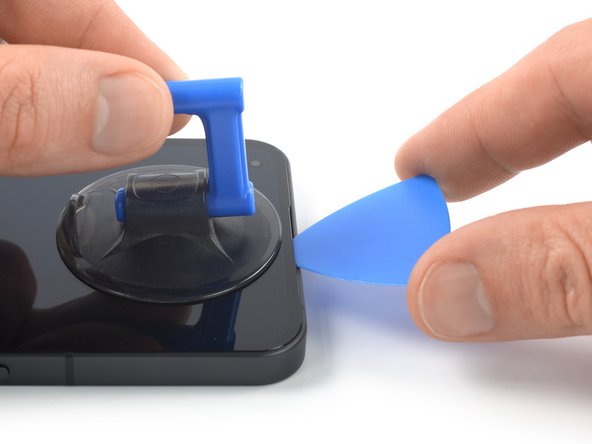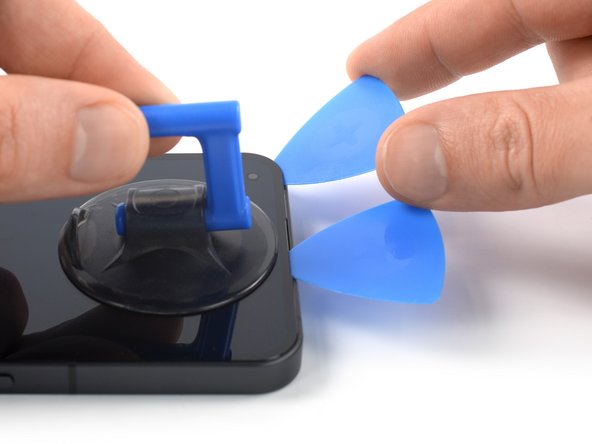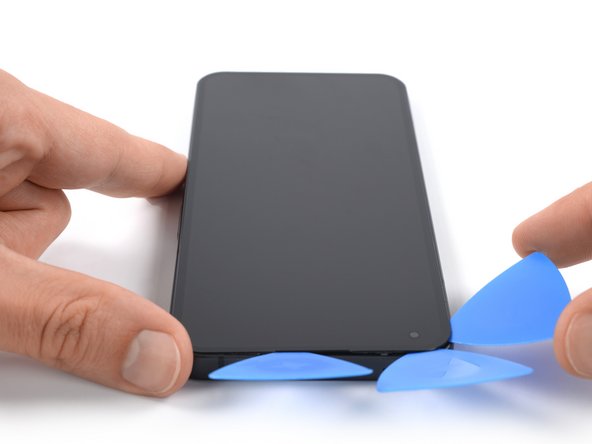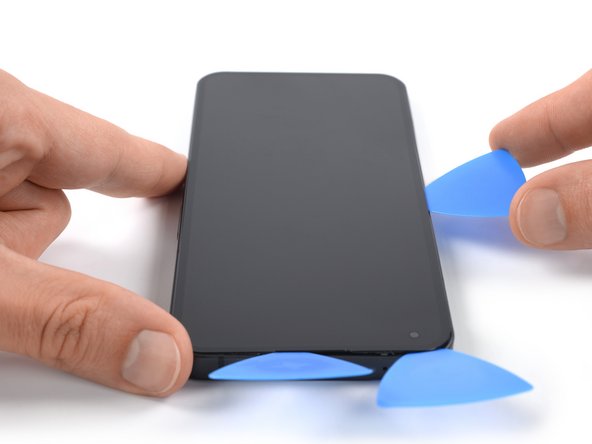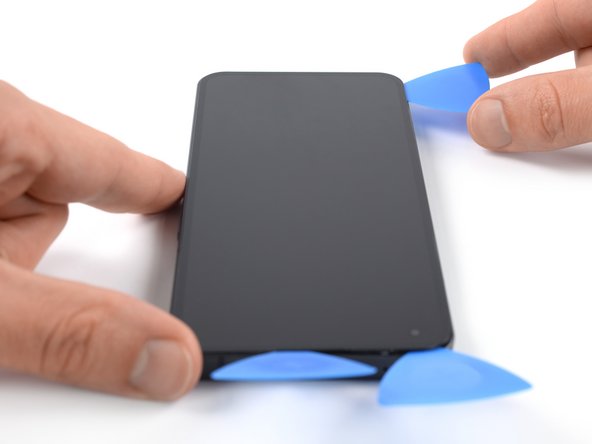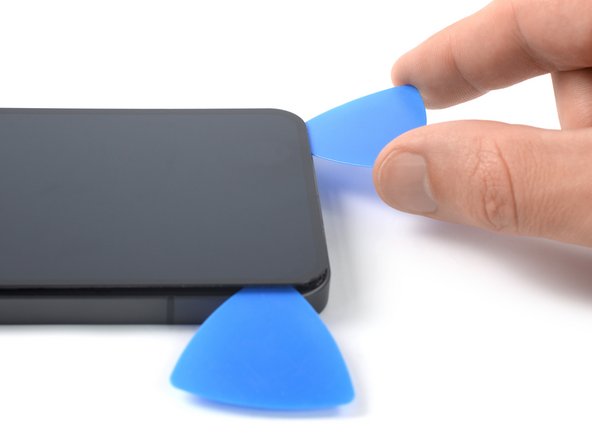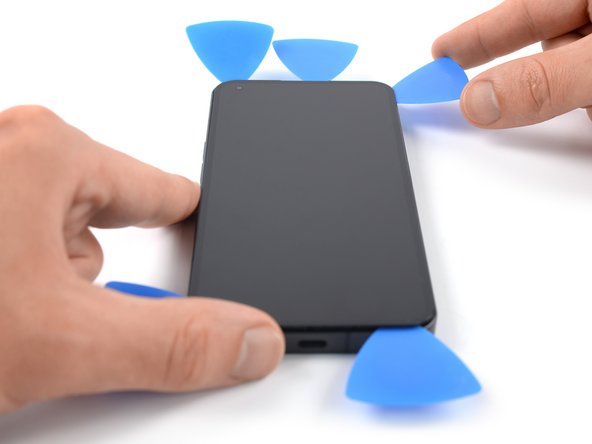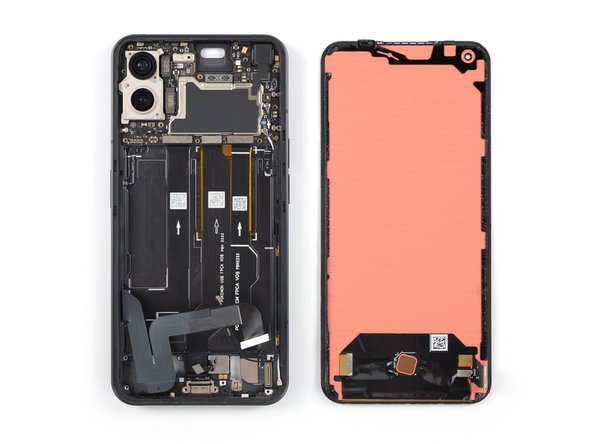Nothing Phone (1) Screen Replacement
ID: 152449
Description: Use this guide to replace a cracked or broken...
Steps:
- Prepare an iOpener and apply it to the rear glass for at least two minutes to loosen the adhesive underneath.
- A hair dryer, heat gun, or hot plate may also be used, but be careful not to overheat the phone—the display and internal battery are both susceptible to heat damage.
- Secure a suction handle to the bottom edge of the rear glass, as close to the edge as possible.
- If the rear glass is cracked, the suction handle may not stick. Try lifting it with strong tape, or superglue the suction handle in place and allow it to cure so you can proceed.
- Lift the rear glass with the suction handle to create a small gap between the back cover and the frame.
- If you're having trouble creating a gap, apply more heat to further soften the adhesive. Follow the iOpener instructions to avoid overheating.
- Insert an opening pick into the gap you created.
- Slide the opening pick to the bottom right corner to slice the adhesive.
- Leave the opening pick in place to prevent the adhesive from resealing.
- Insert a second opening pick at the bottom edge of your phone.
- Slide the opening pick to the bottom left corner to slice the adhesive.
- Leave the opening picks in place to prevent the adhesive from resealing.
- When you slice near the glyph, insert only the tip of the opening pick (~2-3 mm) to avoid damaging the LEDs.
- If the adhesive becomes hard to cut, it has most likely cooled down. Use your iOpener for one to two minutes to reheat it.
- Insert a third opening pick at the bottom left corner of your phone.
- Slide the opening pick along the left edge of your phone to slice the adhesive.
- Leave the opening pick in the top left corner to prevent the adhesive from resealing.
- Insert a fourth opening pick underneath the top left corner of your phone.
- Slide the opening pick along the top edge to slice the adhesive.
- Leave the opening pick in the top right corner to prevent the adhesive from resealing.
- Insert a fifth opening pick underneath the top right corner.
- Slide the opening pick along the right edge of the rear glass to slice the remaining adhesive.
- At this point, the rear glass should be separated from the frame. If there's still resistance around the edges of the glass, use an opening pick to separate any remaining adhesive.
- Remove the rear glass.
- Apply new adhesive where necessary after cleaning the relevant areas with isopropyl alcohol (>90%).
- Since the rear glass of the Nothing Phone (1) is transparent a dust blower may come in handy for cleaning before installing a new rear glass.
- Secure the new back cover with pre-cut adhesive or double-sided adhesive tape. After installing the back cover, apply strong, steady pressure to your phone for several minutes to help the adhesive form a good bond—a stack of heavy books works well.
- The plastic covering the earpiece speaker is held in place by mild adhesive. If you're having a hard time removing it, apply a heated iOpener for 1-2 minutes to loosen the adhesive underneath.
- Insert an opening pick underneath the grey plastic cover at the top edge of your phone.
- Use your opening pick to pry up the plastic cover.
- Remove the plastic cover.
- Use a Torx T5 screwdriver to remove the two 4.2 mm-long screws securing the earpiece speaker.
- Insert the flat end of a spudger underneath the bottom edge of the earpiece speaker.
- Use your spudger to pry up the earpiece speaker.
- Use a pair of tweezers or your fingers to remove the earpiece speaker.
- Use a spudger to disconnect the flash assembly cable by prying the connector straight up from its socket.
- Use a spudger to disconnect the LED glyph cable by prying the connector straight up from its socket.
- Insert an opening pick underneath the recording indicator light cover at the top right corner of the screen.
- Use your opening pick to pry up the plastic cover.
- Use a pair of tweezers or your fingers to remove the recording indicator light cover.
- Be very careful when working on the bottom LED assembly. There's a cable running underneath its whole surface that can be damaged easily.
- The bottom LED assembly is held in place by small pieces of adhesive.
- Slide an opening pick underneath the right, bottom and left edge of the bottom LED assembly to carefully separate it from the daughterboard cover.
- Do not slide the opening pick deeper than shown in the photos. Otherwise you risk damaging the LED cable.
- The bottom LED assembly is still held in place by a small piece of adhesive sitting between the cable winds. Avoid straining or tearing the cable when folding the assembly over.
- Use a pair of blunt nosed tweezers and carefully fold the bottom LED assembly over to get free access to the LED cable connector.
- The LED connector bracket sits very tight and may require some force to open it.
- Insert one arm of a pair of tweezers into the gap at the right side of the connector bracket.
- Push your tweezers toward the left edge of the phone to free the closure flap of the connector bracket.
- If you're struggling to free the flap, pull the black rubber piece to the left to give the bracket more room.
- Lift the connector bracket with your tweezers to access the LED connector.
- Use a spudger to disconnect the LED cable by prying the connector straight up from its socket.
- Use a pair of tweezers or your fingers to remove the bottom LED assembly.
- Use a Torx T5 screwdriver to remove the five 4.2 mm-long screws securing the daughterboard cover.
- The center-most screw is covered by a white sticker.
- The grey plastic shield on top of the daughterboard cover is held in place by mild adhesive.
- Use a pair of tweezers to carefully separate the grey plastic shield from the daughterboard cover and remove it.
- When prying up the daughterboard cover in the following step be very careful and avoid levering with too much force or to press your prying tool too deep underneath the cover. Otherwise, the fingerprint cable running underneath can be easily torn.
- Insert the pointed end of a spudger underneath the top edge of the daughterboard cover just above the black rubber guard securing the LED connector bracket.
- Pry up with the spudger to release the daughterboard cover from its clips.
- Use a pair of tweezers or your fingers to remove the daughterboard cover.
- Use a pair of tweezers to remove the black rubber guard securing the LED connector bracket.
- Use a pair of tweezers to remove the LED connector bracket.
- Use a spudger to disconnect the interconnect cable by prying the connector straight up from its socket.
- The interconnect cable is held in place by mild adhesive.
- Carefully slide an opening pick underneath the interconnect cable to separate it from the charging coil assembly and the loudspeaker.
- During the following step do not fold the cable sharply and only bend it to avoid cable damage.
- Use a pair of tweezers to fold the interconnect cable to the left like you'd open the cover of a book.
- Use a Torx T5 screwdriver to remove the four 4.2 mm-long screws securing the motherboard cover.
- The charging coil assembly is held in place by mild adhesive.
- Insert an opening pick underneath the bottom right edge of the charging coil assembly.
- Slide the opening along the right edge of the charging coil assembly to separate the adhesive.
- Insert an opening pick underneath the bottom left edge of the charging coil assembly.
- Slide the opening along the left edge of the charging coil assembly to separate the adhesive.
- When folding the charging coil assembly over avoid straining components and cables.
- Carefully fold the charging coil to the top edge of the phone to access the motherboard cover screws.
- Use a Phillips screwdriver to remove the three 4.2 mm-long screws securing the motherboard cover.
- Return the charging coil to its original position.
- Don't try to remove the camera cover and flash assembly all the way. Its cable runs underneath the motherboard cover and is very fragile.
- Carefully slide an opening pick underneath the camera cover and flash assembly to separate it from the motherboard cover.
- Avoid straining the camera cover and flash assembly cable when folding it over.
- Use a pair of tweezers to carefully fold the camera cover and flash assembly toward the battery.
- Use a Torx T5 screwdriver to remove the two 4.2 mm-long screws securing the motherboard cover.
- Return the camera cover and flash assembly to its original position.
- Carefully fold the charging coil to the top edge of the phone to access the bottom edge of the motherboard cover.
- Insert the flat end of a spudger underneath the bottom right edge of the motherboard cover.
- Pry up with the spudger to release the motherboard cover from its clips.
- Repeat the prying procedure for the bottom left edge of the motherboard cover.
- Remove the LED glyph assembly.
- Use a spudger to disconnect the battery cable by prying the connector straight up from its socket.
- Remove the two screws securing the loudspeaker:
- One 4.2 mm-long Phillips screw
- One 4.2 mm-long Torx T5 screw
- Insert an spudger underneath the top edge of the loudspeaker.
- Use your spudger to pry up the loudspeaker.
- Use your fingers or a pair of tweezers to remove the loudspeaker.
- Use a spudger to disconnect the fingerprint reader cable by prying the connector straight up from its socket.
- Slide a pair of tweezers under the black coaxial cable until they're snug against the metal connector.
- Disconnect the black coaxial cable by prying it straight up from the daughterboard.
- Use your tweezers to carefully loosen the cable from its routing on the daughterboard and bend it to the side.
- Slide a pair of tweezers under the white coaxial cable until they're snug against the metal connector.
- Disconnect the white coaxial cable by prying it straight up from the daughterboard.
- Use your tweezers to carefully loosen the cable from its routing on the daughterboard and bend it to the side.
- Insert a SIM eject tool, bit, or straightened paper clip into the SIM card tray hole on the bottom edge of the phone.
- Press the SIM eject tool into the SIM card tray hole to eject the SIM card tray.
- Remove the SIM card tray.
- If you accidentally inserted the SIM eject tool into a microphone hole, don't worry! You most likely didn't damage the microphone.
- Use a Phillips screwdriver to remove the 2.9 mm-long screw securing the daughterboard.
- Insert the pointed end of a spudger underneath the top edge of the daughterboard.
- Use your spudger to pry up the daughterboard.
- Use a pair of tweezers of your fingers to carefully remove the daughterboard.
- Use a spudger to disconnect the display cable by prying the connector straight up from its socket.
- During the display removal procedure, make sure all cables are placed underneath the phone and don't stick out to prevent damaging them.
- Apply a heated iOpener to the screen to loosen the adhesive underneath. Apply the iOpener for at least 5 minutes.
- The display adhesive of the Nothing Phone (1) is strong, and it's likely you need to reheat and reapply the iOpener several times before starting the display removal and during the removal procedure.
- A hair dryer, heat gun, or hot plate may also be used, but be careful not to overheat the device.
- Once the screen is warm to touch, apply a suction handle to the top edge of the screen and as close to the edge as possible.
- If your screen is badly cracked, covering it with a layer of clear packing tape may allow the suction cup to adhere. Alternatively, very strong tape may be used instead of the suction handle. If all else fails, you can superglue the suction cup to the screen.
- Lift the screen with the suction handle to create a small gap between the screen and the frame.
- Insert an opening pick into the gap between the midframe and the screen, to the right side of the earpiece speaker cut-out.
- Leave the opening pick in place to prevent the adhesive from resealing.
- Don't try to move this opening pick to the top right corner of the screen. There's a plastic pin on its rear side holding the display in position and blocking the way of the opening pick.
- Insert a second opening pick at the left side of the earpiece speaker cut-out.
- When you slice near the front facing camera, insert only the tip of the opening pick (~2-3 mm) to avoid damaging or smearing the camera.
- Slide the opening pick along the top edge of the screen to slice the adhesive.
- Leave the opening pick in place to prevent the adhesive from resealing.
- Insert a third opening pick at the top left corner of the screen.
- Slide the opening pick along the left edge of the phone to slice the adhesive.
- Leave the opening pick in the bottom left corner to prevent the adhesive from resealing.
- If the adhesive becomes hard to cut, it has most likely cooled down. Use your iOpener or heat gun for 1-2 minutes to reheat it.
- Insert a fourth opening pick underneath the bottom left corner of the screen.
- Slide the opening pick along the bottom edge of the screen to slice the adhesive.
- Leave the opening pick in place to prevent the adhesive from resealing.
- Insert a fifth opening pick at the bottom right corner of the screen.
- Slide the opening pick along the right edge to slice the remaining adhesive.
- Do not try to remove the display all the way yet. The display cable is still threaded through the frame.
- Carefully thread the display cable through the gap in the midframe.
- Remove the screen.
- Apply new adhesive where it's necessary after cleaning the relevant areas with isopropyl alcohol (>90%).
- During reassembly, follow this guide in case you're using a pre-cut adhesive card.





